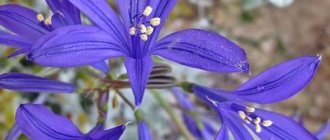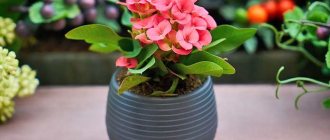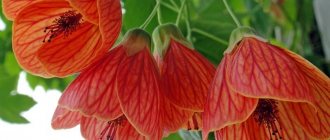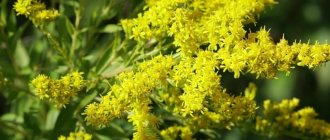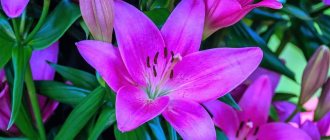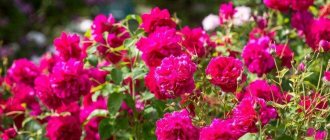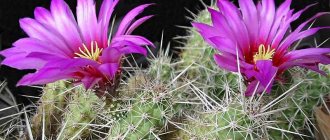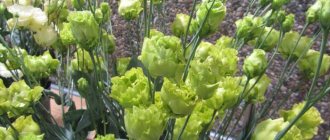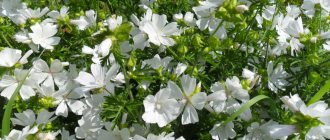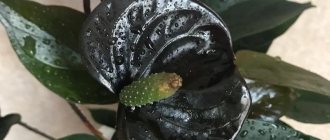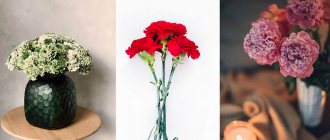Photo: wallpaperscraft.com Lilies are fabulously beautiful and absolutely recognizable, but such popularity has a downside. It happens that we see a lily, and do not even realize that in fact it is a completely different plant from a different family. And sometimes you want to plant lilies in the garden or at home, but the conditions are not suitable. To prevent this from happening again, we have prepared a selection of 17 similar colors. Take a look and get acquainted!
Narcissus
Although daffodils are very recognizable, inexperienced gardeners can easily confuse them with lilies due to the characteristic shape of the flowers. There are dozens of types of daffodils in different shades.
Photo: oir.mobi
Flowers similar to roses: names and photos (catalog)
Flowering and dormant period
Amaryllis usually blooms once a year, often in the fall. But if you provide it with proper care, it can delight you with repeated flowering. During flowering, the plant must receive enough light and moisture. After flowering ends, the peduncle is cut at a height of 3-4 cm from the base of the bulbs.
The rest period must be maintained from December to April. These terms are as close as possible to natural ones. During this period, the flower is transferred to a cool, dark, dry place with an air temperature of at least +10 degrees.
Caring for amaryllis is quite easy. The main thing is to provide the plant with the necessary conditions. Then it will bloom regularly for many years.
Hyacinth
Although hyacinths have a completely different shape of inflorescences and small flowers are collected in large clusters, individually they really resemble lilies. The plant is famous for its richness of colorful varieties and delicate aroma.
Photo: sady-msk.ru
Flowers that look like bells: names and photos
Plants similar to lilies, only small
There are plants whose buds are very similar to lily flowers, but their sizes are much smaller.
Erythronium (kandyk)
Perennial kandyk is a herbaceous plant that produces a shoot from a bulb. Its height reaches about 40 cm, and its appearance is 2 opposite leaves growing at the base and a single shoot, at the end of which a flower bud is formed.
Lily-like flowers
Description
Erythronium produces flowers that look like small lilies. They are drooping and have 6 petals, which form a bell-shaped bowl at the base, and at the edges they diverge to the sides and bend back.
The color can vary and is most often pink, yellow or white. It is the varied colors of this plant that make it possible to form a fairly colorful flower bed when grown in open ground.
Note! In mid-summer the stem and leaves die off. Therefore, when forming a flower bed, it is necessary to take this feature into account and combine them with other types of plants.
Goose onion
It also belongs to the lily family. Its homeland is Africa. Continuous work on plant selection has made it possible to develop more than 100 subspecies.
What does a goose onion look like?
The appearance of the plant is characterized by short stature. Its leaves are slightly elongated and its protruding stem is short. The total number of flowers that can be formed from one tuber reaches 10 pieces. They are distinguished by their small size and very delicate petals of a bright yellow color, for which they have received the popular name “lemon snowdrop”.
The height of goose onions can vary from only 3 cm to 30 cm, depending on the growing conditions created. Therefore, it is good to use it in flower beds as a covering plant.
Goose onion
Ixiolirion
Such small flowers, similar to the blue lily, produced by the plant Ixiolirion Tatarian, can rarely be found in personal plots. But the plant is so unpretentious that even with minimal care it will bloom for almost 1 month.
How Ixiolirion blooms
The plant produces a straight stem to a height of up to 0.5 m. If the growing conditions are unsatisfactory, the height will be only 20-30 cm. At the end of the stem, small inflorescences are formed, combining from 2 to 10 flowers, each of which can reach 5 in diameter centimeters.
The petals can be different shades of blue - from lavender to piercing blue.
Hesperocallis
This plant is better known as the “lily of the desert.” Its homeland is the southern tip of North America.
Hesperocallis
Why does Hesperocallis look like a lily?
The plant has a fairly thick stem with small and sparsely spaced narrow and long leaves. At the top, buds are formed, which gradually bloom into large flowers, reaching a diameter of up to 8 cm.
The color of the petals can vary from snow-white with a silvery tint to greenish tones.
Hesperocallis performs best on loose soils that are highly permeable to moisture.
They need to be watered only in the spring months, while in the summer it should be kept to a minimum. And only when the flower is ready to release a bud, it is necessary to water the “lily of the desert”, after which it will bloom profusely.
Amaryllis
It's not for nothing that belladonna is actually called the belladonna lily, because they are remarkably similar. This is a moisture-loving large plant, the buds of which open up to 12 cm in diameter.
Photo: goodfon.ru
Types and varieties of daylily: photos, names and descriptions
Home care
The most important points in care:
- Air humidity. It is desirable that it be about 50%.
- Temperature. During the growing season, the room temperature should be +18-+22 degrees. During the dormant period, the bulb is transferred to a cool place.
- Illumination. Amaryllis requires a lot of sunlight. That's why it is placed on southern windowsills. In autumn and winter, the flower needs to be provided with additional lighting.
- Watering. Moisture must not stagnate. Water the flower once a week. During dormancy, watering is reduced to once every 2 weeks, and then stopped altogether.
- Substrate. The soil should be well drained and nutritious. A drainage layer 3-4 cm thick must be poured at the bottom of the pot.
- Fertilizers. Fertilizing is carried out every month during the growing season. To do this, mineral and organic fertilizers are used alternately.
- Transfer. The transplant is carried out after the end of the dormant period. This needs to be done once every 3 years. For transplantation, take a pot with a larger diameter (about 3 cm).
- Reproduction. It is best to propagate from daughter bulbs. It is advisable to wear gloves when working with bulbs, as they contain poison.
Find more information about plant care rules here.
Watering
Alstroemeria loves moisture, the soil should not dry out, but the flower does not tolerate waterlogging of the soil, as a result of which its roots easily rot. Therefore, water it often, but moderately, and to maintain moisture, the soil around the plant is loosened and mulched (leaf compost, sawdust, peat).
With the exception of a few species, alstroemeria does not like excess moisture and waterlogged soil.
How to choose
Before purchasing, you should consider the flower catalog and the description of the plants in it. In the store, the bulbs are carefully examined. The bottom should be dry and clean, the scales adjacent to each other. There are no growths, cracks, ulcers or other defects.
The article cannot convey all the variety of species and varieties of lilies. But perhaps after reading it will be easier to find a suitable option for a specific climate, soil type, and light level. In order for a flower to become a decoration of the garden, other nuances are also taken into account - color compatibility with other plants and the potential height of the bush. Knowing what species a lily belongs to, you can understand how to care for it. If all conditions are met, the garden will be filled with beauty and aroma all summer long.
Autumn unpretentious flowers: long-flowering perennials for the garden
With the onset of September, autumn comes into its own more and more quickly. But it’s too early to part with the beauty of the garden. Until the snow falls, the clumps of garden geraniums amaze with the play of bright colors. Incense is dressed up in purple tones. On hills and borders they surprise with the bizarre shapes of sedum. There are also many unpretentious garden perennial flowers in the garden.
Phlox
Phlox is considered one of the brightest “stars” of the autumn flower bed. These plants overwinter excellently in most regions and form green clumps in the spring. They bloom in the second half of summer, maintaining an incredible variety of colors and splendor of inflorescences almost until October.
The list of cultivated phlox today includes more than four dozen species, among which only Drummond's phlox is an annual. All other creeping, bushy, semi-lodging forms with stems from 20 to 150 cm in height are ready to settle in the garden of a lover of decorative and unpretentious perennial flowers for many years.
Perennial asters
Annual asters are the constant leaders of the list of garden annuals for the dacha and garden. However, true or perennial asters are often and undeservedly forgotten.
From August until the snow, these plants bloom, illuminating the entire area with flashes of blue, white, pink, and purple. There are more than 200 species of perennial asters, varying in size, lifestyle and shape. The Alpine aster is quite small. Its basket inflorescences are located on herbaceous erect stems, reminiscent of the familiar chamomile. And the Italian variety has the form of a herbaceous, densely leafy shrub, completely covered with medium-sized flowers. Moreover, all types are extremely decorative and unpretentious.
The height of perennial asters varies from 20 centimeters to one and a half meters. Flowers can be not only of different colors, but simple and double. These perennials form dense dark green clumps already in spring. In summer they can easily tolerate excess light and lack of moisture. And in the fall they completely transform the garden.
Bush forms can be shaped and can be used to create dense living borders and picturesque groups with other autumn plants.
The only drawback of perennial aster is inherent in many perennial crops. A plant that takes root in the garden begins to multiply uncontrollably, quickly developing new territories. To prevent a previously variegated flowerbed from turning into a “kingdom” of asters, you will have to monitor the spread of the shrub and regularly remove the shoots.
Each of the 30 described ornamental plants can claim the title of the most unpretentious perennial flower for the garden. They are all beautiful and amazing in their own way. In fact, the list of non-capricious cultures that require minimal attention and generously share their beauty is not three dozen, but much larger. You just have to look around, notice and move an interesting plant into the garden. A suitable location and neighborhood for the flower is first selected.
We invite you, dear readers, to share information about your favorite perennial plants.
Common varieties
The eastern group includes various types of lilies, which differ not only in color, but also in the shape of the flowers.
- Stargazer
The main color is pink with a white border.
- Time Out
One of the most unpretentious species. The diameter of the flowers is about 20 cm, the petals are widened, the main color is milky, there are inclusions.
The petal is divided in the middle by a yellow line.
Time Out
- Muscadet
The white petals, wavy along the edges, have orange specks.
- White Casablanca
The diameter of the buds is 25 cm. The height of the bush is about 1 m. The color of the petals is white.
White Casablanca
- Barbados
The petals are wavy, crimson in color with dark specks.
- Broken Hart
The flower is pale pink, the edges of the petals are downward.
Broken heart variety
- Con Amore
The main shade is soft pink, with spots of a more saturated color.
This name is translated into Russian as “With love.”
- Lotus Beauty
Color - snow-white. Has very lush flowering.
Lotus Beauty is one of the most unusual representatives of lilies
- Josephine
The petals can be any shade of pink. The aroma is sweetish, well expressed.
- Dizzy
The petals are white with dark specks, separated in the middle by a burgundy stripe.
- Magic Star
The main color is pink, with darker specks. The petals are of unusual shape - their edges are wavy.
Magic Star
- Cobra
Characterized by a strong odor. The color is dark crimson, with a milky border around the edges.
- Snowboard
Double lily with snow-white petals with pink splashes on them. The height of the bush does not exceed 80 cm.
Lily Snowboard can be kept in a flowerpot; it is often kept at home.
- Vangelis
Ruby petals with a white border and a yellow center.
- Terry Lotus Breeze
Color - pink with a hint of lavender.
- Salmon Party
The main tone is yellow with a green tint, with a salmon-colored stripe running down the center.
Lily Salmon Party
Selecting a location
Whether alstroemeria will bloom at all depends largely on how well the place for planting is chosen. The place should be bright, but not very sunny, with light, well-drained soil. On heavy soils, the flower feels very uncomfortable, develops poorly and practically does not bloom. In this case, the soil must be prepared by adding a leavening agent - high-moor peat, leaf compost or rotted manure. The optimal acidity indicator is pH 5.5-6.5, but if the pH exceeds 7, it is recommended to use orthophosphoric acid for fertilizer.
Lily family: general description
Herbaceous, shrubby or woody perennials have entire leaves. Vivid examples are lily and cardiocrinum. Aboveground shoots are simple, without pronounced branches. The underground part is most often represented by a modified rhizome-like shoot, bulb or corm.
The inflorescence has bisexual flowers, in most cases of regular shape. The perianths are delicate, brightly colored. The fruits are represented by a three-cavity capsule, which bursts at the stage of full ripening, opening three doors, or a berry.
What flowers are similar to Crassula, how are they different, why are they confused?
Reference. Crassula or Crassula (lat. Crassula) is a succulent plant, also known as the “money tree”.
It has fleshy leaves whose purpose is to accumulate moisture. Typically, such plants live in places with arid climates. As a rule, flowers that are similar in appearance and characteristics are found among plants belonging to the same family. This:
- aichrizon (lat. Aichryson);
- aeonium (lat. Aeonium);
- Kalanchoe (lat. Kalanhoe).
But there are exceptions: ficus (lat. Ficus) from the Mulberry family or zamioculcas (lat. Zamioculcas) from the Araceae family. All plants presented in the list, with the exception of peperomia, are characterized by the fact that they are very undemanding to care. Many of these flowers are similar in appearance to Crassula. But there are also differences. Most of their analogues have the ability to flower regularly, while the money tree blooms extremely rarely.
Also, some of the plants differ in the arrangement of their leaves: they are not freely scattered over the surface of the trunk, but form rosettes or dense crowns.
Accounting for climate zone
Long-flowered varieties, which were created by breeders by crossing lilies growing on tropical islands, take root in greenhouse conditions in mid-latitudes. Representatives of the Candidum group, American and Orleans hybrids are characterized by low winter hardiness.
What varieties of lilies are suitable for the middle zone
Asian species of plants do not freeze when the temperature drops to -35°, are rarely affected by fungal diseases, are represented by many varieties, and after planting do not require special care. In the Moscow region, in Siberia, these lilies are grown in open ground.
Interspecific hybrids overwinter in the middle zone, but in regions with severe frosts, flowers growing in the garden need shelter.
The best representatives of the lily family
The Liliaceae family includes more than one thousand species of herbaceous perennials, as well as species represented by vines and trees. A significant part of the species is characterized by the presence of bulbs. Popular tulips, onions and hyacinths fall into this category. Lilies form corms, and a distinctive feature of lilies and lilies of the valley is the formation of rhizomes. All species of this family are characterized by the formation of succulent and very strong, numerous bulbous roots.
Reproduction methods
Reproduction methods:
- dividing the bulbs - the bulbous nest is divided into children, which are planted in the ground;
- scale method - scales are separated from the bulbs and transferred to nutrient soil;
- seed method - rarely used, and only with certain hybrids.
When planting scales or babies in the ground in the fall, the bed must be covered with film to protect it from moisture and frost.
As soon as warm spring weather sets in, the film must be opened immediately to avoid creating an atmosphere conducive to the development of diseases.
Trimming
If the plant is not pruned, then from 80 to 130 buds may appear on it, although they will be very small. In the spring, after the first shoots appear, the plant requires thinning - only the strongest branches are left, cutting off about a third of the shoots. Subsequently, withered leaves and wilted flowers are removed, and old stems are also cut off, leaving about 10-15 cm of shoots from the root. This pruning not only improves the appearance of alstroemeria, but also prevents possible diseases.
Alstroemeria is very valuable for cutting, and when cut it can stand for up to a month.
Advice!
The stems of a young plant are very fragile, so to prevent them from breaking in the rain or wind, they will need to be supported.
Alstroemeria ligtu. One of the most cold-resistant species, native to Chile
